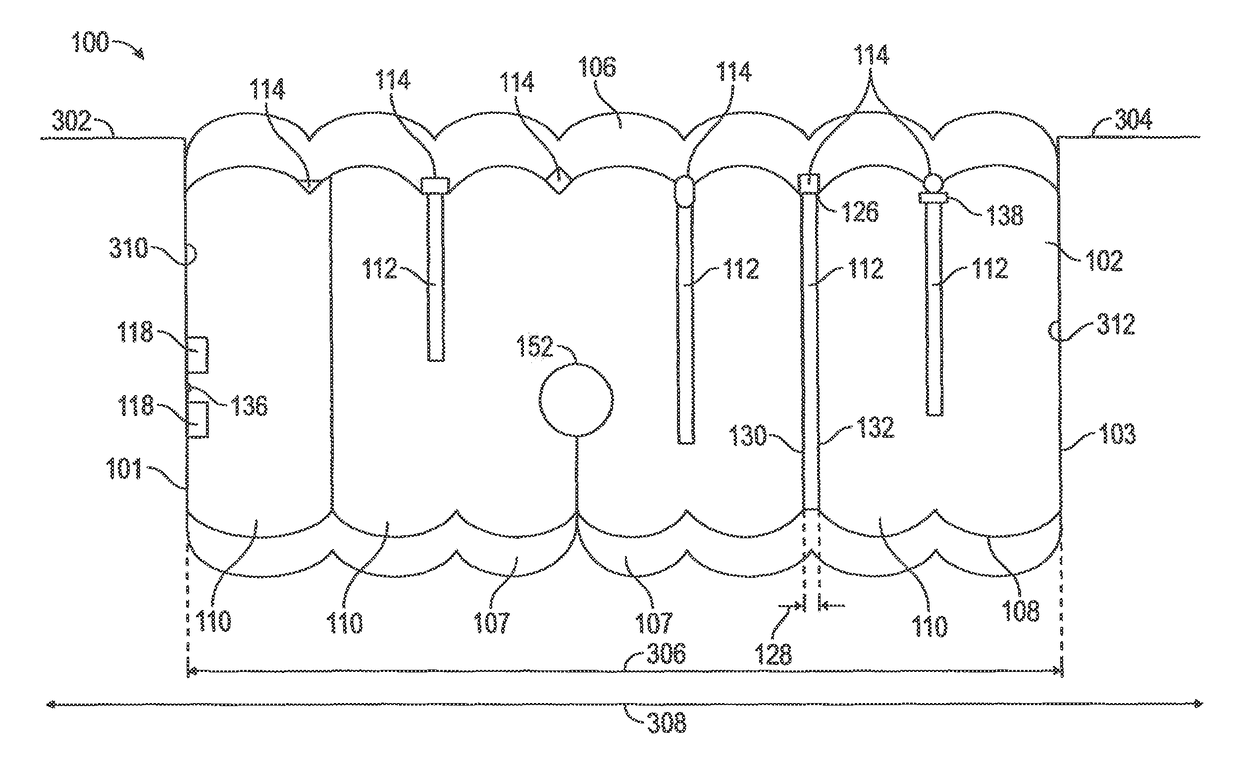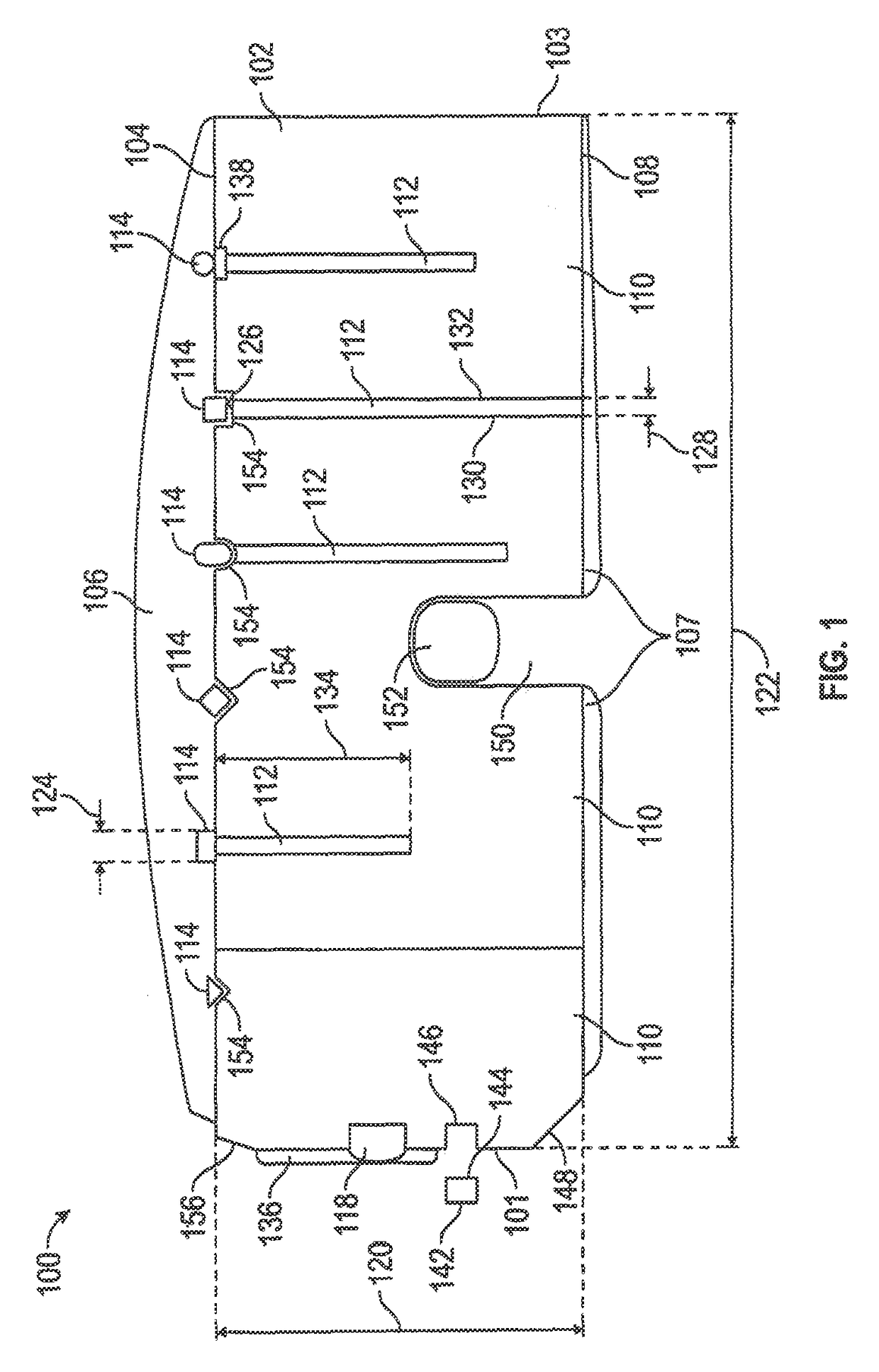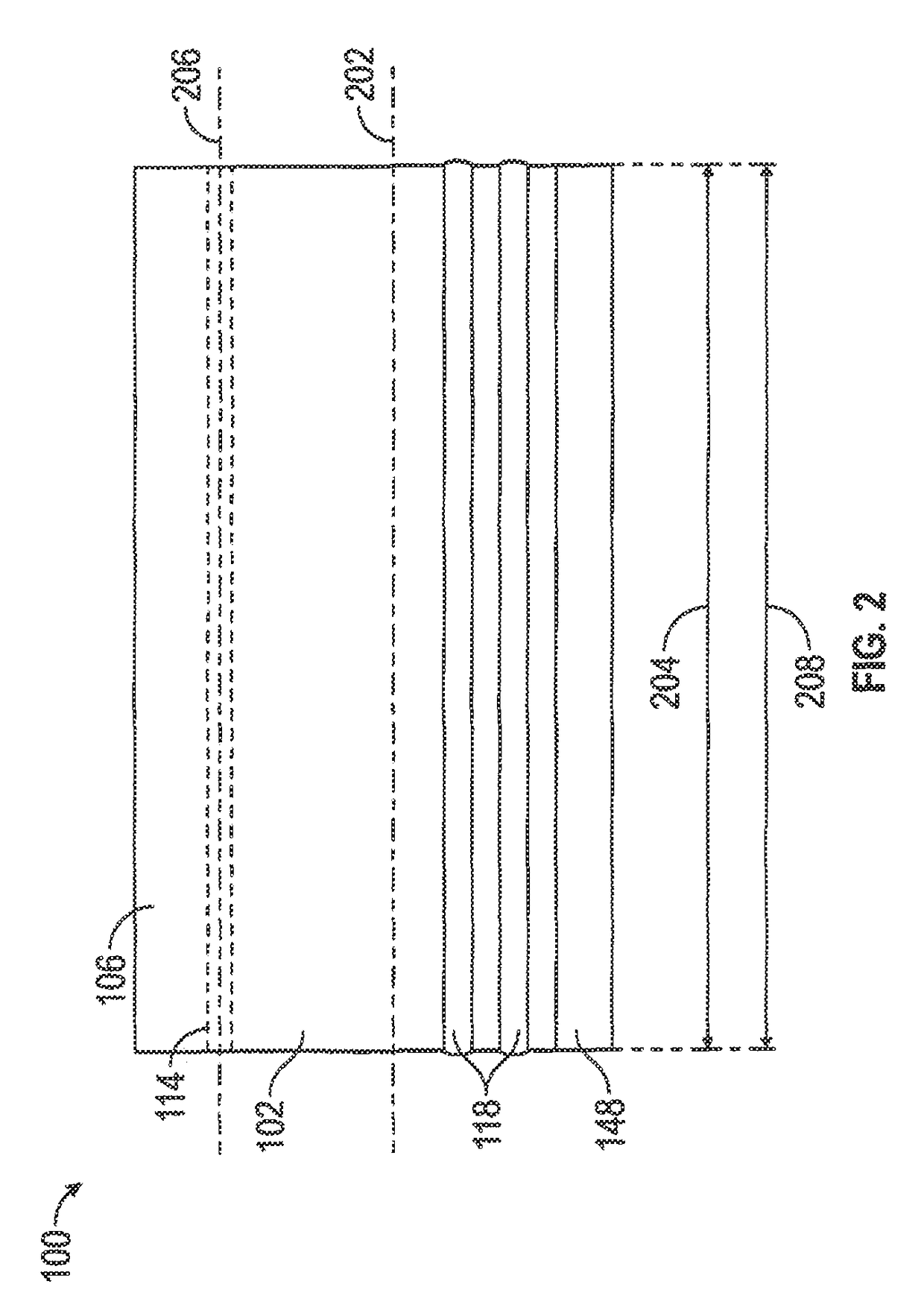Expansion joint for longitudinal load transfer
a longitudinal load and expansion joint technology, applied in the direction of bridges, single unit pavings, roads, etc., can solve the problems of inflexible seals, fragile or experience adhesive or cohesive failures, and system failures to meet the resiliency and seismic movement requirements of expansion joints
- Summary
- Abstract
- Description
- Claims
- Application Information
AI Technical Summary
Benefits of technology
Problems solved by technology
Method used
Image
Examples
Embodiment Construction
[0018]Referring to FIG. 1, an end view of one embodiment of the expansion joint system 100 of the present disclosure is provided. The system 100 includes an elongated core 102 and at least one longitudinal load-transfer member 114 which are bonded together. The system 100 provides an expansion joint system which can be used in standard applications and in exposed, high traffic areas, which is preferably water resistant.
[0019]The elongated core 102 is composed of resiliently compressible foam, which may be closed cell or open cell foam, or a combination thereof. The extent of compressibility may be selected based on the need. A higher compression is known to result in higher water resistance, but may create difficulties in installation, and ultimately becomes so compressed as to lack flexibility or further compressibility, such as at a ratio of 5:1. The elongated core 102 may be compressible by 25%, or may compress by 100% or as high as 400% so that the elongated core 102 is one quar...
PUM
| Property | Measurement | Unit |
|---|---|---|
| compression ratios | aaaaa | aaaaa |
| compression ratios | aaaaa | aaaaa |
| width | aaaaa | aaaaa |
Abstract
Description
Claims
Application Information
 Login to View More
Login to View More - Generate Ideas
- Intellectual Property
- Life Sciences
- Materials
- Tech Scout
- Unparalleled Data Quality
- Higher Quality Content
- 60% Fewer Hallucinations
Browse by: Latest US Patents, China's latest patents, Technical Efficacy Thesaurus, Application Domain, Technology Topic, Popular Technical Reports.
© 2025 PatSnap. All rights reserved.Legal|Privacy policy|Modern Slavery Act Transparency Statement|Sitemap|About US| Contact US: help@patsnap.com



